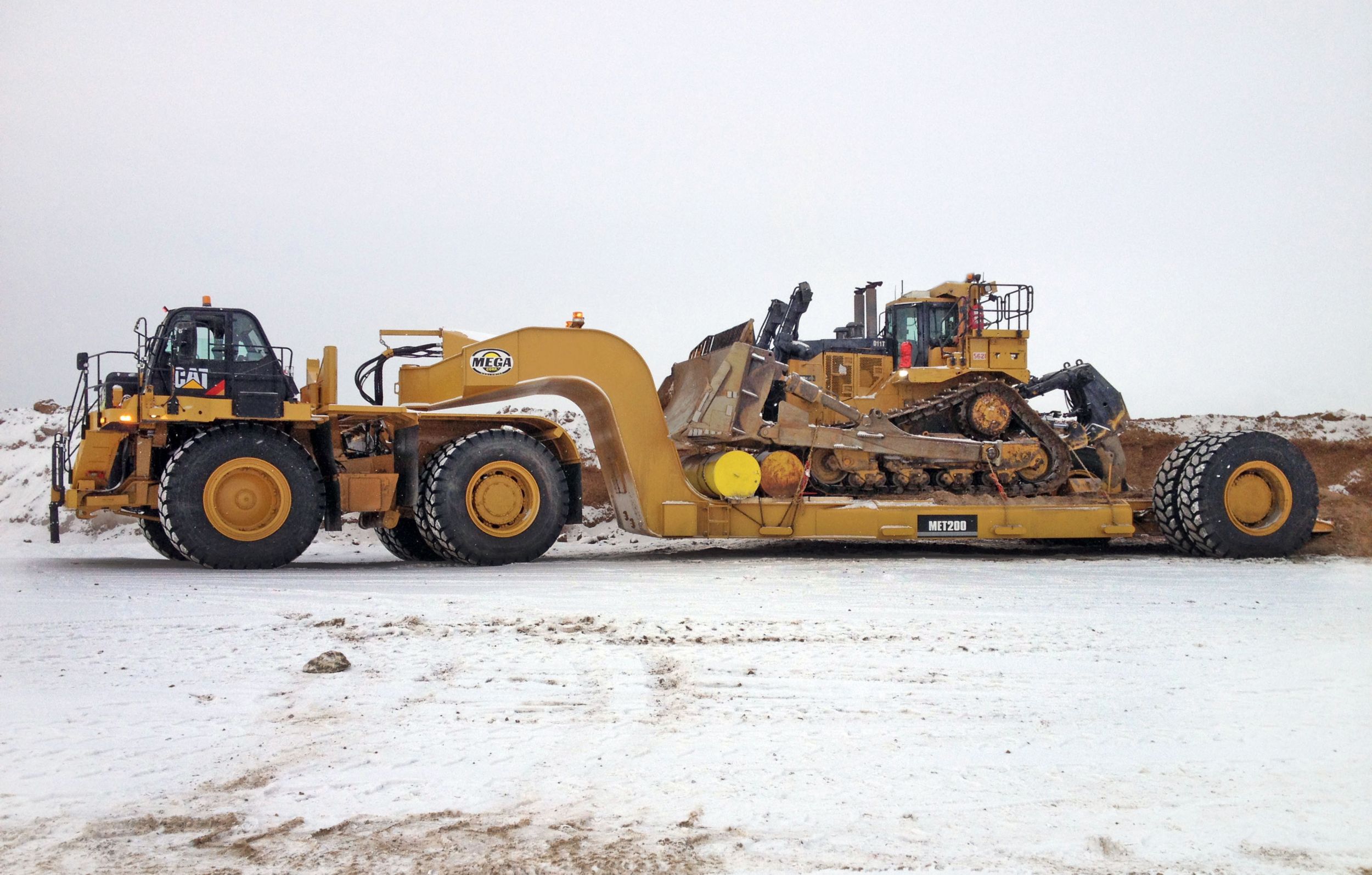

Sign In
Welcome! Sign In to personalize your Cat.com experience
If you already have an existing account with another Cat App, you can use the same account to sign in here
Register Now
One Account. All of Cat.
Your Caterpillar account is the single account you use to log in to select services and applications we offer. Shop for parts and machines online, manage your fleet, go mobile, and more.
Account Information
Site Settings
Security
Author: Small Business Expert | June 25, 2020 | Topic: Used Equipment
Choosing Between a Gooseneck or Pintle Trailer
When it comes to moving heavy equipment, you need a trailer and hitch that can handle the specified load while making your trip as safe and efficient as possible. Naturally, operators hoping to make the most of their equipment budget often find themselves trying to determine which type of trailer is the most effective for their applications.
Fleet managers will commonly use either a gooseneck or a pintle trailer to transport their equipment over long distances. Although both of these trailer hitch setups have their pros and cons, it’s important to understand the details of each option so you can decide which one works best for you.
The Gooseneck Trailer
The defining characteristic of the gooseneck is that the attachment spot is positioned over the truck’s rear axle — this is where the weight of the trailer and load is distributed. The hitch consists of a ball and a coupler which are used to connect the truck and trailer.
You can usually count on a smooth, easy ride when you use one of these setups. Goosenecks tend to be efficient and well-balanced since they attach nearer the middle of the truck, so they serve as the popular choice for drivers who are carrying heavier loads.
The Pintle Trailer
Instead of using a ball and coupler like a gooseneck, the pintle setup uses a ring and a hook to attach the trailer to the truck. The pintle is also used as a method for transporting heavy-duty equipment and materials, though the weight is distributed at the back of the vehicle rather than over the axle.
Drivers often choose the pintle hitch for its incredible strength and flexibility. However, some drivers find that they offer a less smooth, stable ride than other types of hitches.
The Pintle Hitch vs. Gooseneck in Practice
As noted above, both the gooseneck and the pintle trailer offer their own sets of advantages. That said, which is best suited for your applications? Can you tow more with a gooseneck or a pintle trailer?
If you ask someone for their opinion about which trailer to buy, you’ll often hear them say that gooseneck is better for most towing applications because it offers a smoother driving experience. The downside of pintle trailers is that while they work well for big vehicles, they can be less efficient for lighter trucks with heavier loads because the pintle hitch distributes all the weight in the rear, which can cause pivoting and make it more of a challenge to balance the load.
On the other hand, pintle hitches have excellent load capacity and range of motion, so you'll often see them on heavy-duty dump trailers or in other industrial applications. If you’re planning to tow equipment or materials using a larger truck, you might benefit more from a pintle hitch.
Learn More About Trailers for Heavy Equipment
The best way to choose a gooseneck or pintle dump trailer — or any type of trailer — depends on your personal needs and preferences. Before making your investment, it’s important to consider the size of the load and the terrain you’ll be driving on, as well as the sizes of the truck and trailer. As long as you consider all the alternatives and abide by the proper procedures, you’ll be in for a safe and comfortable ride.
Contact your local Cat® dealer today for more guidance and support on heavy equipment trailers.
